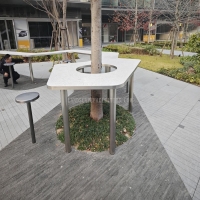Welcome to the website for landscape facilities products and knowledge.
How does the table’s design support the use of collaborative software or digital tools?
In today's interconnected work environments, the design of a table plays a pivotal role in supporting the use of collaborative software and digital tools. Modern tables are no longer mere surfaces for placing objects; they are engineered to foster teamwork, streamline workflows, and integrate seamlessly with technology. One key aspect is the incorporation of built-in connectivity features, such as wireless charging pads, USB ports, and HDMI interfaces, which allow team members to easily power devices and share screens during meetings. This eliminates clutter and reduces setup time, enabling smoother transitions into digital collaborations using tools like Slack, Trello, or Google Workspace.
Moreover, the physical layout of collaborative tables often includes ergonomic shapes, such as rounded or oval designs, that promote equal participation and eye contact among users. This encourages open communication and idea-sharing, which is essential when using digital whiteboards or project management apps. Additionally, some advanced tables feature adjustable heights and modular components, allowing teams to reconfigure the space for different tasks—from brainstorming sessions with interactive software to focused work with individual devices. Materials like scratch-resistant and anti-glare surfaces further enhance the experience by providing durable, comfortable spaces for prolonged digital use.
Another innovative element is the integration of embedded touchscreens or projection capabilities, turning the table itself into an interactive hub. This supports real-time data visualization and editing through collaborative platforms, making meetings more dynamic and productive. By combining these design elements, modern tables not only physically support devices but also psychologically encourage a culture of collaboration, ultimately maximizing the efficiency of digital tools in group settings. As workplaces evolve, table design continues to adapt, bridging the gap between physical furniture and virtual teamwork to drive innovation and productivity.
Related search:

Recommendation
An outdoor bar counter with stainless steel and terrazzo materials in an irregular shape